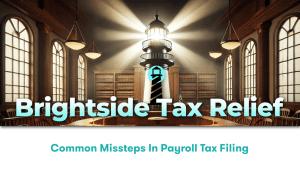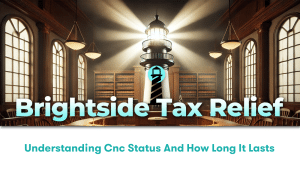Understanding the Differences Between Wage and Other Garnishments
In the realm of debt management and repayment, two commonly used terms are Wage Garnishment and Debt Garnishment. While both processes involve deducting a sum from an individual’s income to satisfy a debt, their exact mechanisms differ significantly. As a premier nationwide tax relief company, Brightside Tax Relief LLC provides comprehensive insights into this complex area, making it easy for you to grasp the fine line between wage and other garnishments.
What Exactly is Wage Garnishment?
Wage garnishment, also known as wage attachment, is a legal procedure where a portion of a person’s earnings is withheld by the employer to pay off a debt. It is typically the last resort for creditors and usually occurs when other attempts to collect a debt have failed. This process is generally conducted under the order of a court, but in some cases, it can occur due to an authorized statutory scheme.
Given the potential financial hardships it can inflict, most states regulate wage garnishment to protect employees from overly aggressive collection tactics. Indeed, the garnishment limit is set by federal law to the lesser of 25% of the worker’s disposable earnings or the amount by which these earnings exceed 30 times the federal minimum hourly wage. Nevertheless, certain debts, such as child support or tax debts, may invoke more stringent garnishment conditions.
Diving into the World of Debt Garnishment
On the other hand, debt garnishment – which includes bank account garnishment – refers to a legal process of recovering debts by directly taking the money from the debtor’s bank account. Unlike wage garnishment, which involves an employer’s participation, a standard debt garnishment bypasses this third party and targets the debtor’s personal assets directly.
For a creditor to garnish a debtor’s bank account, they need to obtain a judgment from the court. Once the court order is secured, the creditor serves this garnishment order to the debtor’s bank, instructing it to freeze and ultimately seize the debtor’s funds.
It’s worth noting that not every type of account can be garnished. For instance, specific income sources, such as social security benefits or disability payments, are typically protected from both wage and debt garnishments.
The Crucial Confluence: The Role of the IRS
As a tax relief organization, we must mention the unique position the Internal Revenue Service (IRS) occupies in garnishments. The IRS can utilize either wage or debt garnishment — or a combination of both — to collect taxes that have not been paid. Unlike most creditors, the IRS does not need to take the debtor to court to initiate garnishments. Instead, the agency simply sends a notice to the debtor, informing them of the impending garnishment.
For an in-depth look at how the IRS handles wage and garnishments, you can check it out here.
Standing on the Brightside of Garnishments
Although wage and garnishment procedures can seem overwhelming and burdensome, understanding these processes can make all the difference. As our client, you can rest assured that Brightside Tax Relief LLC is fully equipped to guide you through this often-confusing landscape and help you minimize its potential impact on your finances.
Our team of tax professionals possesses a deep understanding of the Internal Revenue Code and can provide you with information and strategies that align with your specific needs. We are dedicated to ensuring that you retain as much of your hard-earned income as possible while responsibly addressing your debt obligations.
In Summary
Drawing the line between wage and other garnishments is crucial, especially in the nuanced world of tax legislation. Although both processes aim to recover unpaid debts, their means of achieving this objective differ. By better understanding these garnishment procedures and the unique role the IRS plays, individuals and businesses can better navigate their fiscal responsibilities.
Ultimately, whether you’re dealing with wage garnishment, bank account garnishment, or tax debt, the support and insight provided by a reliable tax relief company like Brightside Tax Relief LLC can prove invaluable. With our collective knowledge, experience, and dedication, we are committed to helping you manage and lessen the burden of your tax obligations while maintaining a healthy financial standing.




